Medical expert article
Very often, moles on the body cause discomfort, for example, when wearing clothes or jewelry. And aesthetically, such formations are not always appropriate. A few decades ago, mole removal was carried out only surgically - using a scalpel. Nowadays, you can remove an unwanted nevus in a variety of ways, after consulting with a doctor.
[1], [2], [3], [4], [5], [6], [7], [8]
Is mole removal dangerous?
In many cases, the very existence of a mole can be more dangerous than its removal. Despite the fact that birthmarks are benign formations, under certain conditions they can degenerate into melanoma - a cancerous tumor.
However, this does not mean that it is necessary to remove absolutely all nevi on the body. It is advisable to get rid of only potentially dangerous formations:
- exposed to constant injury from clothing or accessories;
- periodically disturbing for other reasons.
Don't worry that the surgery will cause new birthmarks to appear - it won't. Moreover, some stains may be so unfavorable that they must be removed.
It can be dangerous to get rid of moles yourself at home, using traditional methods, as well as using the services of a non-specialist - a person who does not have the appropriate education and skills.
What indications are considered sufficient for mole removal?
- Noticeable growth of a birthmark in a relatively short period.
- Change in spot color (both lightening and darkening).
- Development of the inflammatory process (redness, swelling).
- The appearance of blood, ulcers and other elements on the surface of the birthmark.
- Asymmetry of the spot.
- The appearance of peeling, crusts, blisters.
- Change in nevus consistency (hardening, softening).
- The size of the mole is too large.
- Location in areas of friction with clothing or other traumatic areas.
Any of the listed symptoms is considered a direct indication for mandatory elimination of the tumor.
Is special preparation required for the removal procedure?
If the birthmark is removed for aesthetic reasons, then special preparation may not be required. The doctor will examine the formation, assess its condition and depth, and then choose the most optimal method of removal.
If the removal of a nevus is carried out on suspicion of a malignant formation, then preparation may include taking certain tests and conducting research.
What tests need to be done to remove a mole? It depends on the individual patient. In most cases, the following types of diagnostics may be needed:
- general blood analysis;
- coagulogram (study of the blood coagulation system);
- blood test for tumor markers.
If necessary, if local anesthesia is planned, a drug reaction test may be performed to avoid allergies to anesthetic drugs. Most often, doctors use lidocaine-based products for this.
What kind of doctor removes moles?
Mole removal can be performed by a general surgeon in any hospital or clinic, as well as by specialized specialists:
It is much safer to carry out the procedure in medical institutions, where all the necessary equipment is available that supports most of the most common methods of getting rid of moles. In such medical centers, the doctor will be able to carry out the necessary diagnostics and select the most appropriate type of treatment for a particular patient.
It is strongly not recommended to remove tumors in dubious salons, or to trust your health to incompetent persons without the appropriate education and experience - this can be dangerous.
Mole removal methods: which one to choose?
There are many known ways to remove a mole. Each of these methods has its own indications, positive and negative sides. You can get rid of a birthmark using a scalpel, laser or “electronic knife”. Typically, the choice of method is made together with the doctor who will perform the procedure.
- Laser mole removal is a quick and effective way to get rid of unwanted skin lesions. One session is enough for this. In this case, healthy skin is not affected, so there are no scars left after removal, and the risk of bleeding is reduced to zero. A few months after the laser procedure, only a barely noticeable spot remains.
- Removing moles with nitrogen (cryodestruction method) is not a very popular method, which sometimes does not allow the tumor to be removed in one procedure, since it is not possible to accurately determine the depth of tissue damage by nitrogen. In addition, sometimes after the removal procedure there is a thermal burn, after which a trace of scar tissue may remain. Removal of moles by cryodestruction has a long recovery period for the skin, however, the low price of this method is often the main criterion for choosing patients.
- Surgical removal of a mole is the only method that allows a patient to be qualitatively relieved of deep-lying and large-sized formations on the skin. Most often, mole removal with a scalpel is carried out on areas of the skin hidden under clothing, since a scar usually remains after the operation. The size of the scar depends on the initial size of the birthmark and the extent to which the surgeon has captured nearby healthy tissue. The huge advantages of this method are its relatively low cost, guaranteed quality of removal, and the ability to send the resulting tissue elements for histological examination.
- Radio wave removal of moles is also called the radiosurgical method - this is a non-contact procedure for treating tissue and removing moles using a radio knife, that is, removal using radio waves. A radioknife is a special electrode, at the end of which energy is generated that heats and evaporates tissue. Radio wave removal of moles is considered a gentle method that does not leave behind scars and scars, and healing occurs quickly and without complications.
- Removing a mole by electrocoagulation is a thermal effect on the desired area of skin using high-frequency current. The essence of the method is to apply current and heat a special platinum loop to 200°C. With this loop, the doctor performs the procedure using “cutting” and “coagulation” waves. Removing moles with electric current allows you to “cut off” unnecessary tissue, exposing a small wound. This wound heals by primary intention and leaves virtually no scar.
Technique: how is a mole removed?
Important: removal of a birthmark should only be carried out by a specialist with relevant experience. Getting rid of nevi on your own can have serious consequences.
Any of the selected procedures is performed under local anesthesia - using an injection of anesthetic or a special external anesthetic gel.
Removal of moles on the face is most often performed with a laser. This method allows you to eliminate the tumor without further scar formation. The procedure itself lasts only a few minutes, so, if desired, the doctor can simultaneously remove several formations at once. Within five minutes after the session, the patient can go home.
Removal of hanging moles is usually carried out using electrocoagulation. The entire session lasts no longer than 15-20 minutes, which depends on the diameter and number of birthmarks to be removed. Before the procedure, the doctor administers anesthesia by applying a special anesthetic gel or by injection. Next, by heating the tungsten electrode with an electric discharge, the hanging formation is “cut off” at once. Healthy tissues located in close proximity are cauterized, which prevents bleeding from the wound. The material obtained after removal can be sent for histology, and the wound itself usually heals within one week. Convex moles can be removed in a similar way if they are small and not particularly deep.
Removal of large moles is carried out only surgically. This operation is performed under local anesthesia, and all removed tissue elements are sent for histology (to exclude or confirm a cancerous tumor). The entire area around the formation is treated with an antiseptic. During the operation, the doctor partially cuts off healthy tissue to prevent regrowth of the birthmark. After this, suture material is applied, which is removed after about one week. The operated patient can immediately go home, but he will have to visit the doctor several more times for dressings and suture removal.
Removal of moles with histological examination is a mandatory procedure for a surgeon if a malignant tumor is suspected. Only such a study will help detect even the initial stage of tissue degeneration, cancerous and precancerous processes. In order to send tissue for research, it must be as intact as possible. Therefore, histology is possible only when tumors are removed surgically or using electrocoagulation.
Removing moles in children is done using the same methods as in adults. The choice of procedure is determined depending on the patient’s age and his individual sensitivity threshold, as well as on some psychological aspects of upbringing. Often, especially when working with young children, doctors prefer to use less traumatic methods - gluing plasters, applying keratolytic preparations, etc. The effectiveness of such procedures is noticeably lower, and the birthmark, having disappeared, may appear again. However, the choice of removal technique remains with the doctor who will directly deal with a particular child. They try to remove tumors when the child reaches adolescence. However, if they cause certain inconvenience to the baby, or if the moles behave unnaturally, they are removed at any period of the little patient’s life.
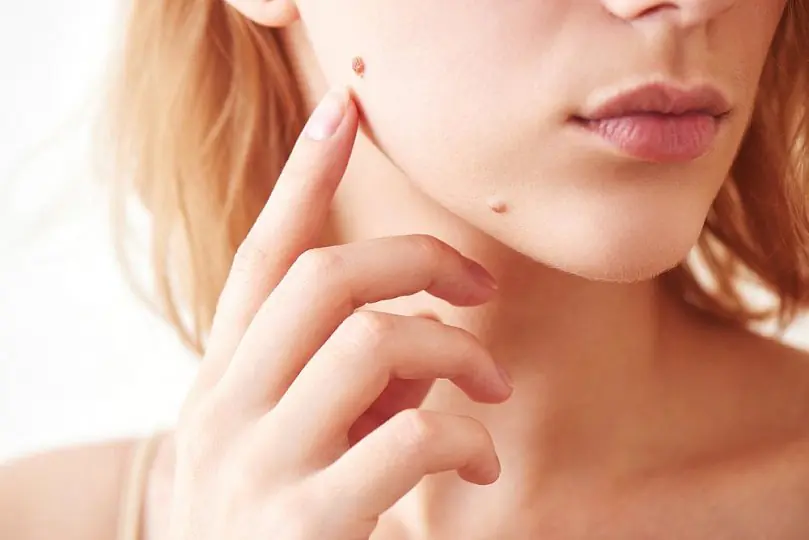
Skin is the largest organ of the human body. Doctor of Science, dermatologist Yaael Adler describes it as “two square meters that dictate how we live.” And this is true: all the processes that occur in the body certainly affect the condition of our skin. And the impact of bad weather conditions and external damaging factors - no need to say!
You need to protect your skin, take care of it and surround it with attention. If anyone thinks that applying a portion of cream in the morning and another in the evening is quite enough, they are mistaken. The skin should be examined regularly, both independently and with the help of a doctor. Moreover, do this from the moment of infancy!
What does the skin hide?
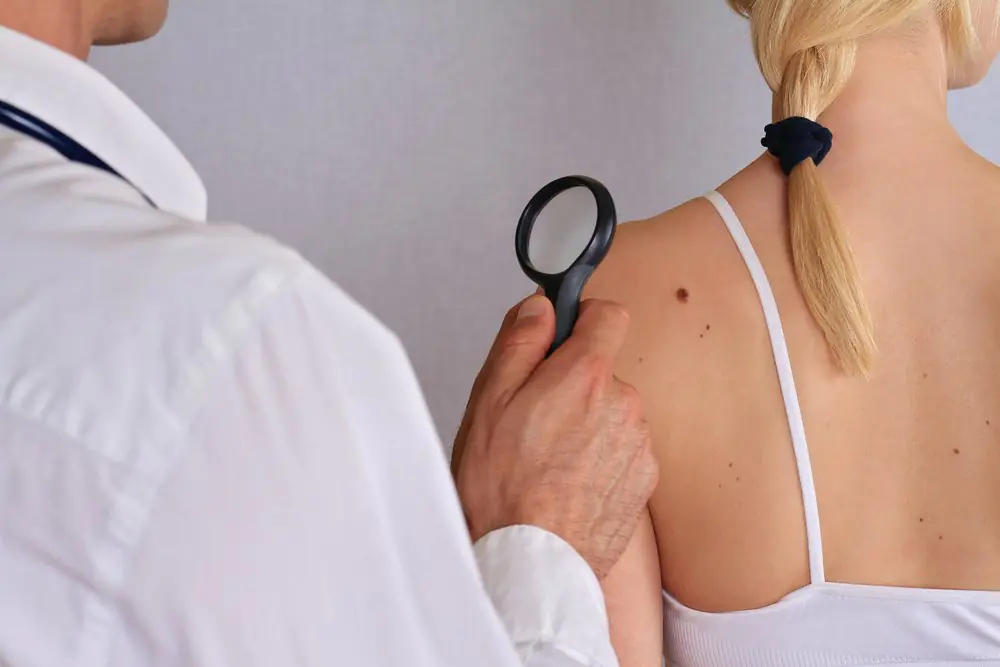
From the first days of a baby's life, parents should take care of the condition and cleanliness of his skin. Regular examinations by a doctor are the key to a child’s excellent well-being and health. You need to be especially careful when examining areas of high insolation, that is, those that are regularly exposed to the sun. Why is this so important?
Almost every person has pigmented formations on the skin of their body. They can be congenital or acquired, absolutely safe or not. It is impossible to find out their nature without the help of a doctor. There are many types of skin formations. These are pigment spots, nevi, vascular formations, keratomas and many others. But a banal “inflammation” or “pimple” can turn out to be melanoma at any moment!
Every year, every person is recommended to undergo examinations by a dermatologist, and if there are a lot of moles on the body, every six months. In addition, you need to remember and always use the “Figaro rule”.

Fthe form of education rises above the level of the skin.
ANDthe size has changed or the growth of education has accelerated.
Gthe wounds are irregular and not clearly visible.
Athe edges are symmetrical: one half is different from the other.
Rthe size of the formation is more than 5 mm in diameter.
ABOUTpaint formation is uneven.

Moles or nevi are benign pigmented skin formations. Everyone has them, they appear in childhood, grow with us and often raise many questions. There are three main types of moles:
1. Epidermal nevus. These are flat brown or dark brown spots. For example, such a mole was on the cheek Marilyn Monroe.
2. Mixed or borderline nevi. Slightly raised pigmented papules. Famous mole Cindy Crawford belongs to this type.
3. Intradermal nevi. Round pink or skin-colored formations that increase in size with age. U Sarah Jessica Parker there was a nevus on her chin, which she successfully removed recently.
Since moles are benign formations, it is not necessary to remove them. Moles are mainly removed for aesthetic reasons or in cases of suspected skin cancer. Sometimes some malignant skin formations are disguised as a nevus, so it is important to periodically have moles checked by a dermatologist, as well as monitor their changes at home.

Have moles appeared on your body? This is a normal physiological feature of our body, there is no need to worry right away, but it is worth observing. Unfortunately, there are moles that cause a rather dangerous disease - melanoma. To avoid illness, pay close attention to the skin of your body and be systematically examined by dermatologists.
Moles often appear due to excessive tanning and sunburn. Towards the end of summer, inspect the skin of your shoulders, arms and décolleté. It is quite possible that they are covered with pigment spots that look like freckles. For those who live in hot countries, this is the norm. People with fair skin need to be very careful with them.
In winter, some of the pigmentation on the skin disappears, but some of the spots can turn into moles. If their shape and color do not change, do not worry.
Moles often appear due to hormonal changes in the body. When processes such as pregnancy or puberty begin, the active appearance of moles begins. At this time, melanin, which is responsible for skin pigmentation, is released into the human body in large quantities. Most often, if the hormonal levels are brought back to normal, the mole disappears.
But sometimes a mole looks suspicious or is simply in the way, then it is removed.
There are completely safe and almost painless ways to remove moles: surgical excision, laser, radio wave method, cryodestruction (freezing with liquid nitrogen) with further collection of material for histological examination.
I recommend that you treat the area of skin where the procedure was performed with care, do not injure it, and apply healing agents. As soon as the crust on the former mole has come off, use sunscreen for two months. Has the size of the mole increased or the boundaries of the mole changed? Do you experience bleeding, pain, or redness around the nevus? Contact your doctor immediately.
Myths and facts about moles and melanoma
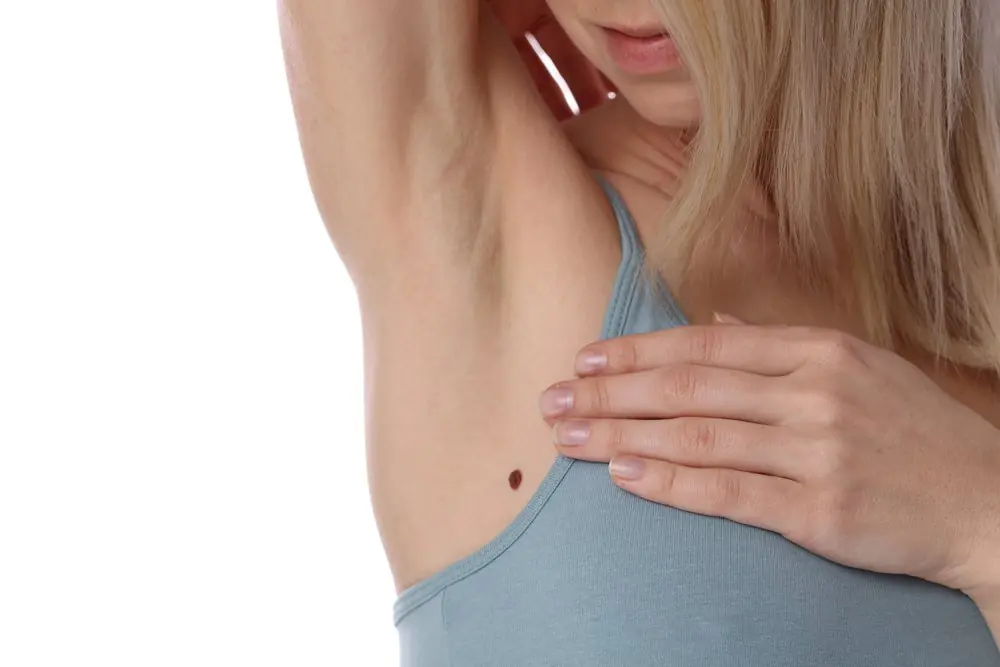
Recommendations for removal are not relevant for all moles, but only for those that pose a danger or are constantly injured (trauma can accelerate the development of melanoma if it already exists). But for aesthetic reasons, you can “get rid of” any mole. However, before planning the procedure, you should say goodbye to the most popular myths about it!
Myth 1: Moles present on the body from birth are not dangerous
If a mole is on a person’s body from birth, this does not mean that over time it cannot develop from benign to malignant. As mentioned above, any changes should alert you. If you notice them, you should immediately contact a dermatologist.
Myth 2: No moles - nothing to worry about
A disease such as melanoma can occur on absolutely any part of the skin of the body. There are cases when the disease affects the mucous membranes - the mouth, eyes. Only a doctor can recognize it after a thorough examination. That's why everyone should get preventative skin checks.
Myth 3: If there are a lot of moles, you can forget about holidays in the mountains and the sea
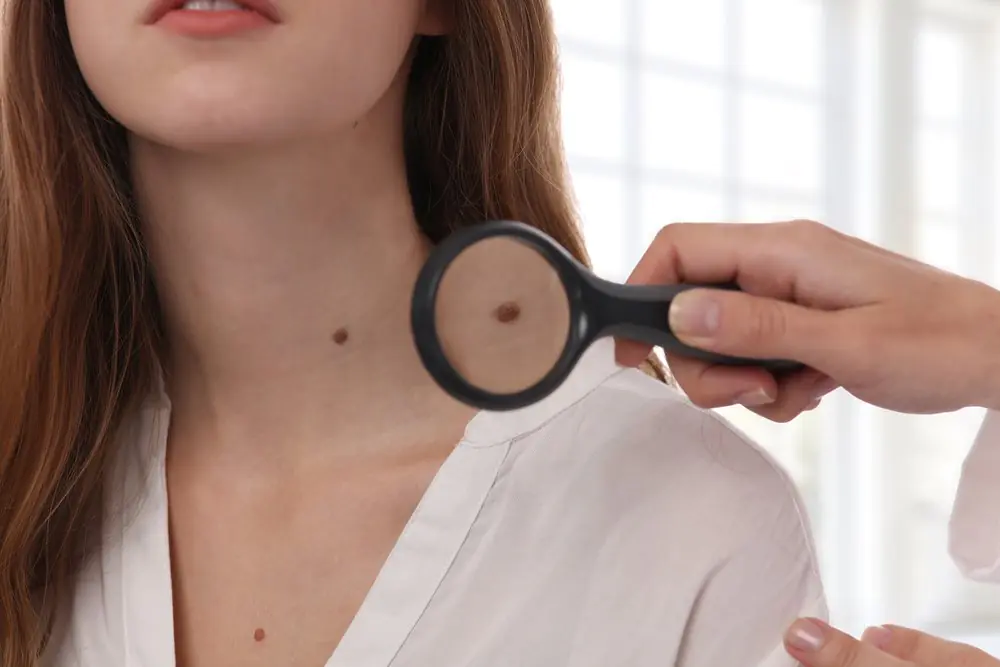
For people with many “marks” on their skin - moles, freckles, age spots - it is really advisable to be in the sun as little as possible. But this is not a reason to refuse a hike in the mountains or a trip to Egypt. You just have to keep in mind that you can only sunbathe under an awning, and swim in the sea - strictly before 10 a.m. and after 5 p.m. Such measures are due to the fact that any pigment formation on the skin can develop into melanoma. Doctors recommend that such patients undergo a preventive examination by a dermatologist at least once every 6 months.
Myth 4: If you constantly use cream with SPF, you won’t be afraid of melanoma
Cosmetics with a high protection factor are not a panacea for all diseases. But you must resort to its help: it reduces the risk of skin damage from sunlight and acts as a preventive measure for melanoma. However, this does not mean that after applying your favorite sunscreen to your skin, you can sleep peacefully - including in the open sun. Melanoma often occurs in closed areas of the body, including those that are not exposed to the sun.
Myth 5: Monitoring is only necessary for dark areas of the skin
Not only darkening, but also lightening of the skin with a neoplasm should be a reason to consult a doctor. Medicine knows of non-pigmented melanoma, which may appear as a colorless or pink spot or nodule. In matters of prevention, it is better to be overly cautious than to see a doctor too late.
Myth 6: Age spots, moles and warts can be “removed” at home
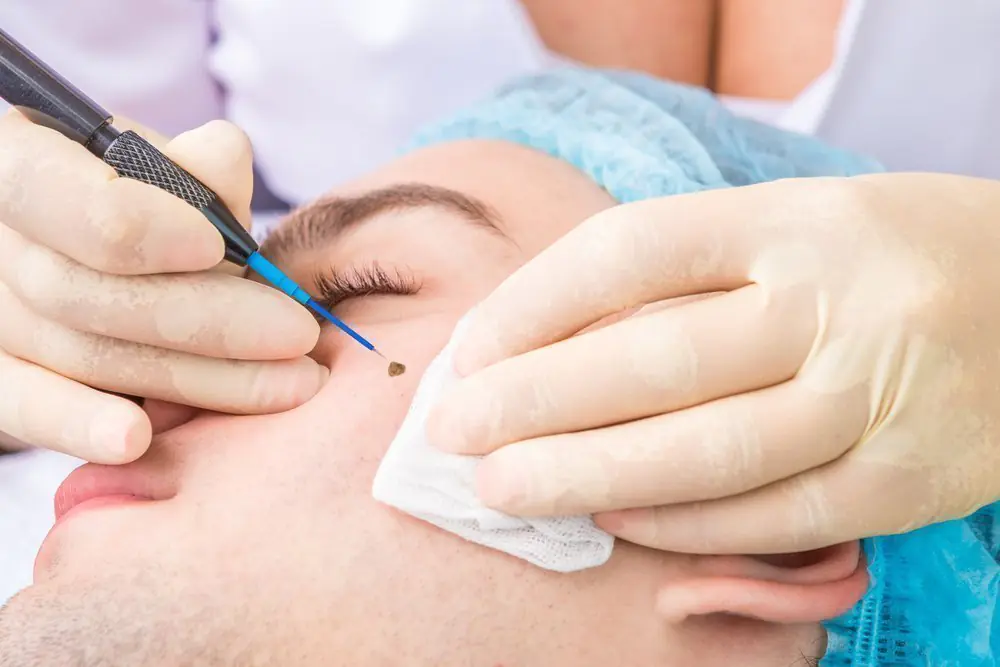
You can’t not only diagnose yourself, but also try to “treat” tumors on the skin. It is especially dangerous to bleach and burn pigmented areas (including using “harmless” folk remedies), and to tie moles and warts with threads to stop their growth or make them “fall off.” You should also not use medications from the nearest pharmacy without consulting your doctor. At best, you will get discomfort and burns on your skin, at worst, you risk your life!
Myth 7: An examination is not necessary before removing a mole.
The legislation of the Russian Federation prohibits the removal of moles in beauty salons and clinics that do not have a license to carry out this procedure. The event can only take place in a medical clinic. Before the procedure, the doctor will examine you using a dermatoscope. If the need arises, a more thorough examination will be initiated - in-depth analysis and observation of the dynamics of formations through dermatosiascopy. This procedure allows you to create very high-resolution images of the tumor, practically “looking under the skin.”
Myth 8: After removing a mole, it can get even worse
A correctly performed procedure does not pose any risks to human health. Provided that the removal tactics were chosen by the doctor based on the data received from the patient. Various types of procedures - surgery, laser therapy, electroagulation, radioknife, removal with liquid nitrogen - have both indications and contraindications. The appropriateness of a particular method in each specific case is determined individually.
Melanoma, that is, skin cancer, cannot arise as a result of the procedure. Moreover, its timely implementation is the only treatment tactic.

A mole or nevus is an excess accumulation of melanocytes, cells that produce melanin, under the skin. The decision to remove a mole can be caused not only by aesthetic reasons, but also by the testimony of a specialist. The doctor may prescribe removal if the mole increases in size, bleeding, itching, changes in shape, etc. There are also pigmented neoplasms that require specialist supervision, for example, moles that appear in adulthood, papillomatous nevi.
If you decide to get rid of a mole on your own, you must first consult with a dermatologist. The specialist will conduct an initial examination and dermoscopy and then refer the patient to an oncologist, if necessary.
The larger the mole, the higher the risk of degeneration. There are several ways to remove moles, which will be chosen by your doctor. Each method has its advantages, as well as its disadvantages. The laser method can cause thermal burns of the skin, the radio wave method can only remove small moles, so surgical excision is the most preferable. It is also important to remember the need for mandatory histological examination of the tumor.

There are two main methods used to remove moles.
1. The mole is not completely removed, but only its upper part, compared with the surface of the skin. For this, a laser or an electric coagulator is used. In this case, part of the mole remains inside the skin, so pigmentation may return over time.
2. Surgical removal of the mole with suturing. In this case, the mole is completely removed.
In both cases, it is necessary to do a histological analysis to confirm the benignity of the removed lesion.
The algorithm of actions looks like this:
1. If a mole bothers you, you notice changes in it, or you don’t like it from an aesthetic point of view, make an appointment with a dermatologist.
2. A dermatologist will use a dermatoscope to determine whether it is dangerous or not, and depending on the type of mole, he will tell you the best removal method for you.
3. All removal methods are performed under local anesthesia. This is a painless and quick procedure.
4. The aesthetic result after removal depends on the experience of the dermatologist, the location and size of the mole and the individual characteristics of the patient.
5. After removing a mole, it is imperative to do a histological examination to confirm its benignity.

Each of us has moles on our body in varying quantities. What is a mole?
In medicine, moles are called nevi. A nevus is a benign neoplasm that is located in the skin. If you imagine all layers of the skin as a 25-story building, where the roof is the topmost layer of the epidermis, then the nevus occupies all floors, starting from the first.
If you have a mole, you need to monitor it. After all, mole cells are abnormal skin cells whose behavior is sometimes difficult to predict.
The most dangerous neoplasm is melanoma. It may not manifest itself in any way and may not bother you, be very tiny, but very quickly metastasize and lead to death.
There are several signs that should especially alert you when you can’t put off a visit to the doctor:
- if you injured a mole, for example, you scratched it, got an abrasion, or the mole is located in places of friction. Injured moles must be removed;
- if the nevi have grown to large sizes. Moles more than 5 mm in diameter must also be removed, since it is difficult for the body to track their development;
- if a mole suddenly changes its color or size;
- changed its structure, that is, peeling, cracks and crusts appeared;
- if there are unpleasant sensations from touching a mole, for example, itching or burning;
- other moles have formed around the nevus;
- the contour of the mole has become unclear;
- if on the surface of the nevus you notice blood or liquid, heterogeneity, the appearance of bumps, spots, hairs appearing or disappearing.
When you visit a doctor, first of all you need to determine what type of nevus is: benign or malignant. If it is benign, then is it prone to malignancy, that is, will it become malignant? The doctor examines the mole externally and may use a Dermatoscope, a device that determines what type the mole is. The dermatoscope allows you to see the full structure of the nevus, vascular pattern, pigment location and much more. After such a diagnosis, the doctor decides what to do with the mole. If a decision is made to remove it, the nevus should subsequently be sent for histological examination.
At the moment, there are already many ways to remove moles. The most popular is laser therapy. A laser beam is applied to the mole, which burns it. The laser copes with the task perfectly; this method can be called the best. There are no contraindications to it.
In second place we can safely put electrocoagulation - a good, improved and widespread method. However, since removal is carried out using electricity, the method has a number of contraindications: the presence of a pacemaker, epilepsy, chronic diseases in the acute stage, if the body does not tolerate treatment with electric current, poor blood clotting, and some others.
The oldest and still reliable method is surgical. The nevus is cut out with a scalpel, then, if necessary, a suture is placed in place. The mole is excised quite deeply, so a small scar may remain.
Radioexcision is the effect on a tumor using high-frequency waves. Radio waves destroy nevus cells, and the material can later be taken for histological examination. Contraindications: pacemaker, skin malignancy, diabetes.
There is another method - cryodestruction (removal with liquid nitrogen), but you need to resort to it if other methods are not suitable, or it is not possible to perform surgical removal. The fact is that the tumor may not be removed the first time, so cryodestruction is done in several stages. Damage to surrounding tissue is also possible.
Rehabilitation after any method of removal occurs as prescribed by the doctor and lasts at least 2-3 weeks. The place where the mole was is treated with fucarcin for about 5 days. This is a wonderful tool. In the first days, the site of the mole is sealed with a bactericidal plaster. It is necessary to allow the crust to form quietly, and under no circumstances tear it off. The crust should fall off on its own.
It is important to remember that after removal, tanning, thermal and water procedures are contraindicated for a month (you can take a shower, but we cancel the bath and swimming pool).
Watch the moles on your body, and if you have a lot of them, you need to see a dermatovenerologist once a year.
There are situations when certain issues related to the removal of a mole begin to be clarified when everything has already happened. And then plans collapse, weekends or vacations are disrupted. To help you avoid this, I decided to write a short article.
Here and further I will consider the case of removing a mole at the request of the patient - for cosmetic reasons. This is due to the fact that when a mole is removed for medical reasons (biopsy), there is no time for preparation - this must be done as quickly as possible.
I will consider everything that will be said next based on personal experience in removing moles using radio wave surgery.
Many myths and stereotypes about mole removal has come from the times when it was done only with a scalpel. Now everything has become much easier. The wounds after the removal of small moles are more reminiscent of the severity of skin damage superficial scratchesthan surgical wounds.
WHAT YOU CAN DO BEFORE AND AFTER MOLE REMOVAL
What time of year is best to remove moles?
At any. Although there is a stereotype that it is impossible to remove moles in the summer. Why? Who decided this?
This is most likely due to the fact that with excessive exposure to ultraviolet light, hypopigmentation (lighter skin), hyperpigmentation (darker area) and hypertrophic scar (bulge) can develop at the extraction site.
But there are two ways to avoid these unpleasant things.
- Avoid exposure to direct sunlight for 2 months after removal.
- If step 1 cannot be completed for one reason or another, then when in the sun you need to coat the removal site with a thick layer of SPF 50 sunscreen.
With that said, it's worth planning a vacation. after two months after mole removal.

After removing moles, you should not visit the solarium. Going to the solarium is generally enough
Can I sunbathe after mole removal?
Can I use cosmetics after surgery?
It's possible, but only when the crust falls off. During this period, I recommend using silicone-based gels to prevent scarring. In addition, any cosmetics can be applied on top of these preparations. Until the crust falls off, I think you should refrain from using cosmetics, since their effect on wound healing is unpredictable. I can recommend the same for cosmetic procedures for cleansing the face (peeling, using scrubs).
Are you allergic to local painkillers?
An important point that I always clarify at the appointment is whether the patient has allergic reactions to the drugs Ultracaine, Lidocaine, Novocaine. If you have been to the dentist at least once in your life and were given painkilling injections, most likely you have no reaction to Ultracaine.
What medications are best to take?
If you have high blood pressure (more than 140/90 mmHg) and are taking any medications - It's better to do this before deleting.
What medications should not be taken before removal?
Medicines that reduce blood viscosity (Thrombo Ass, Warfarin, Aspirin, Plavix, Xarelto, etc.). Taking them may increase the duration of the operation due to increased bleeding. However, it’s probably not worth giving them up.
Can moles be removed during menstruation?
Can. The stereotype that operations cannot be performed during menstruation came from “big” surgery. In the second half of the cycle, closer to the beginning of menstruation, blood viscosity decreases and this really needs to be taken into account when planning surgical interventions. Fortunately, in my practice there was no heavy bleeding after removal of moles using radio wave surgery. Bleeding is more likely when removal of moles on the head and neck in the second half of the menstrual cycle. The same probability at the same time will be lower when removing a mole on the body and limbs.
Can I wet the mole removal site? Bathhouse? Pool? Gym?
I hear the echo again: “Do not wet the wound before removing the stitches, otherwise it will fester!”
Fortunately, the vast majority of benign skin tumors are located no deeper than 1–1.5 mm. When removing them using radio wave surgery, dissecting the skin to its full depth, matching the edges and applying sutures not required.
I recommend that my patients refrain from water procedures for 24 hours after removal, but there is no connection with the risk of suppuration. After removal, I put a piece of hemostatic sponge on the wound - it is needed to prevent bleeding, which can occur during the first day.
It is convenient to use a silicone patch in a bathhouse, swimming pool or gym - more on that below.
Do you need to cover the mole removal site with a bandage?
There are so many doctors, so many opinions on this topic. However, there are studies that show that if wound healing occurs in a moist environment, the risk of scarring is minimal. Therefore, I recommend that my patients cover the extraction site with a band-aid until a crust appears. Once it forms, there is no need for a patch.
Can I have sex after removing moles on intimate places?
In my opinion, it is possible if you are not bothered by possible discomfort in the wound area and the likelihood of bleeding, which is higher the larger the size of the removed mole.
Can I drink alcohol after mole removal?
It's possible, but I'm for sobriety 

After removing a mole, you can drink alcohol, but it is important to remember: alcohol is harmful
Should I take antibiotics after removal?
In most cases this is not required. The likelihood of suppuration when removed by radio wave surgery is very low. Not because the method is somehow magical, but because the type of wound is this.
However, when removing in the area of fingers and toes, as well as on the scalp and when removing large formations, I sometimes prescribe a course of antibiotics for 5-7 days for prophylactic purposes.
Can you fly on an airplane?
Do MRI and other diagnostic procedures?
I want to remove a mole with a radio knife, but there is metal (prosthesis) in my body. Is it dangerous?
No, the presence of metal objects in the body is not a contraindication.
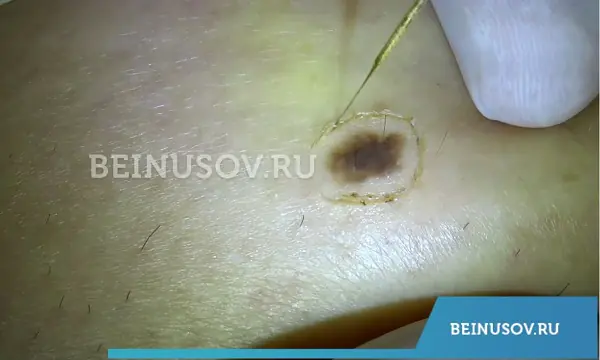
It is possible to remove moles with a radio knife even if there are metal prostheses in the body
MOLES CANNOT BE REMOVED IF:
You are pregnant
I I don't recommend it remove moles during pregnancy for two reasons:
- All drugs from the group of local painkillers have pregnancy in the list of contraindications.
- In my experience, you are more likely to develop a scar during pregnancy.
This, of course, does not apply to situations where it is necessary to remove a mole for oncological reasons.
If you have a pacemaker
Radioknife and electrocoagulation contraindicated. In such cases, removal should only be done with a laser or scalpel.
At the same time, there is evidence that many modern pacemakers do not respond to radio waves or electrical current. In any case, you must be told that you have a pacemaker before any operation, regardless of its volume.
Summary, or Briefly about the main thing:
2 important restrictions after removing moles - do not sunbathe for 2 months, do not get wet for 24 hours. Moles should not be removed if you are pregnant or have a pacemaker.
Everything else, in my opinion, is either a relative contraindication or not such at all.



